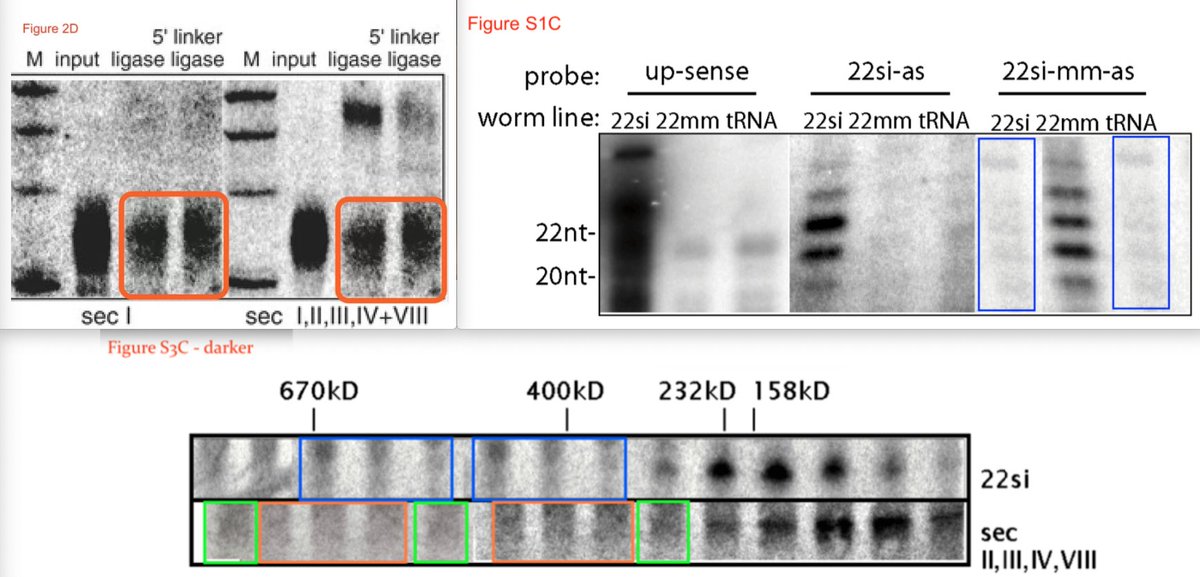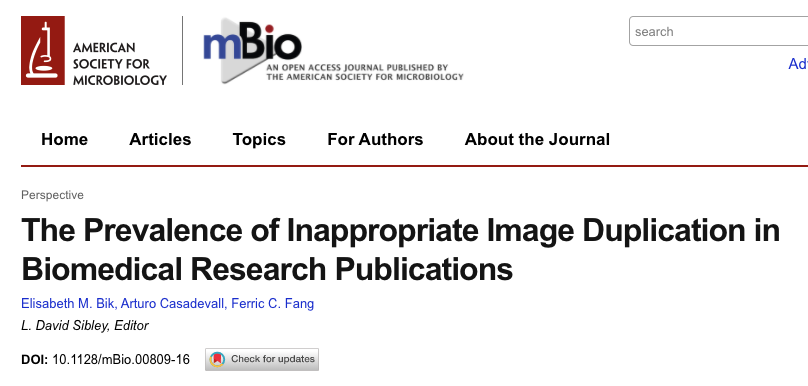Five years ago I found three possibly Photoshopped images in a @ScienceMagazine paper by the lab of @RPlasterk
Yesterday, the paper got retracted.
Here is what happened, and what went wrong or right.
https://pubpeer.com/publications/2B00E5BEB5B75B499550D03C15EFA4">https://pubpeer.com/publicati...
Yesterday, the paper got retracted.
Here is what happened, and what went wrong or right.
https://pubpeer.com/publications/2B00E5BEB5B75B499550D03C15EFA4">https://pubpeer.com/publicati...
These images are not simple duplications as some of the news articles state. They contain very unexpected repetitive elements.
Like a photo of a dinner party of 20 persons, but with the same person visible twice, in exactly the same pose.
Like a photo of a dinner party of 20 persons, but with the same person visible twice, in exactly the same pose.
I did not use any special software to detect these duplications. I just scanned 20,000 papers carefully for repeats like these, just by eye.
Our paper was published in mBio in 2016.
https://mbio.asm.org/content/7/3/e00809-16">https://mbio.asm.org/content/7...
Our paper was published in mBio in 2016.
https://mbio.asm.org/content/7/3/e00809-16">https://mbio.asm.org/content/7...
I reported the problematic images from Sijen et al. paper to @ScienceMagazine in April 2015 per email to the journal editors, so they could start an investigation and ask the authors what happened.
Nothing happened, so a couple of months later I posted the problems, anonymously, on @PubPeer.
I made sure to alert three of the authors, so they should have gotten an email.
https://pubpeer.com/publications/2B00E5BEB5B75B499550D03C15EFA4">https://pubpeer.com/publicati...
I made sure to alert three of the authors, so they should have gotten an email.
https://pubpeer.com/publications/2B00E5BEB5B75B499550D03C15EFA4">https://pubpeer.com/publicati...
None of the authors replied on @PubPeer, unfortunately. So I waited for the journal to get back to me. I waited two years.
In 2017, I sent an email to @ScienceMagazine asking them for an update on the case, and on ten other papers that I had sent them. An editor wrote back and promised to send me an update later that week.
That update never came.
That update never came.
I waited three more years. Still no update from the journal. Still no response from the authors.
Well, I am a very patient person. But five years seemed like an awful long time to wait.
So I tweeted about the paper& #39;s problematic images in March 2020, five years after reporting the paper to Science. https://twitter.com/MicrobiomDigest/status/1237655295477690369">https://twitter.com/Microbiom...
So I tweeted about the paper& #39;s problematic images in March 2020, five years after reporting the paper to Science. https://twitter.com/MicrobiomDigest/status/1237655295477690369">https://twitter.com/Microbiom...
Pepijn van Erp @pjvanerp, a Dutch scientist and skeptic, wrote an article about these findings (in Dutch), a couple of days after my tweet. That article appeared to finally set some things in motion. https://kloptdatwel.nl/2020/03/13/knip-en-plakwerk/">https://kloptdatwel.nl/2020/03/1...
The Hubrecht Institute @_Hubrecht, where the research had taken place, responded that they would start an investigation. And they did. https://twitter.com/_Hubrecht/status/1240931203345235968">https://twitter.com/_Hubrecht...
And yesterday, @ScienceMagazine announced that they retracted the paper. However, they did not tell me that beforehand.
I had to hear about the retraction from @RetractionWatch, not from the journal or from @_Hubrecht
I had to hear about the retraction from @RetractionWatch, not from the journal or from @_Hubrecht
What went right here: the paper got retracted.
Images with duplicated features within the same photo, without a good alternative explanation, are likely to be photoshopped. If that is indeed the case here, it would be research misconduct, and then retraction is a good decision.
Images with duplicated features within the same photo, without a good alternative explanation, are likely to be photoshopped. If that is indeed the case here, it would be research misconduct, and then retraction is a good decision.
What went wrong:
1. @ScienceMagazine never followed up after I sent them my concerns
2. Based on surprised reaction of authors and institute, the journal might have not taken any action at all
3. Journal did not give me an update after deciding to retract
1. @ScienceMagazine never followed up after I sent them my concerns
2. Based on surprised reaction of authors and institute, the journal might have not taken any action at all
3. Journal did not give me an update after deciding to retract
All three things are in not in compliance with @C0PE guidelines. @ScienceMagazine should have acted upon the allegations, and should have provided me with an update once they decided to retract.
Here are those guidelines, Science. Maybe read them?
https://publicationethics.org/files/COPE_FLOW_Image_Manip_SCREEN_AW2.pdf">https://publicationethics.org/files/COP...
Here are those guidelines, Science. Maybe read them?
https://publicationethics.org/files/COPE_FLOW_Image_Manip_SCREEN_AW2.pdf">https://publicationethics.org/files/COP...
I know we scientists all think of @ScienceMagazine and @nature as amazing journals. But when it comes to acting upon image or other concerns, they appear to prefer to do nothing and sweep things under the rug. This is wrong. They should take such allegations seriously.
I would love to hear from @ScienceMagazine what happened here. Did they contact the authors or institute back in 2015? Or did they only act after I tweeted about it five years later?
And how about the other ten @ScienceMagazine papers I reported five years ago? At least eight of these have not been acted upon either.
I would love a discussion with the editors, as opposed to taking things to Twitter.
I would love a discussion with the editors, as opposed to taking things to Twitter.

 Read on Twitter
Read on Twitter



